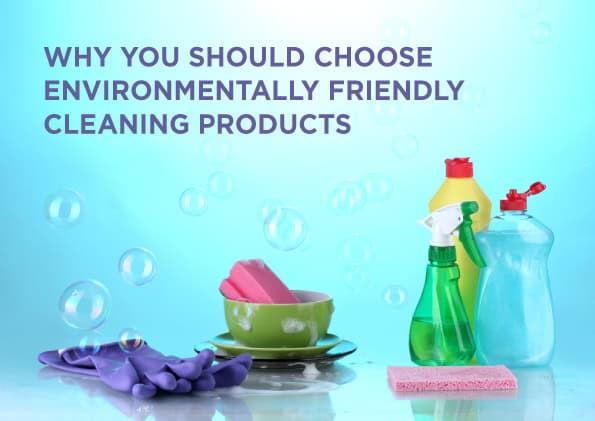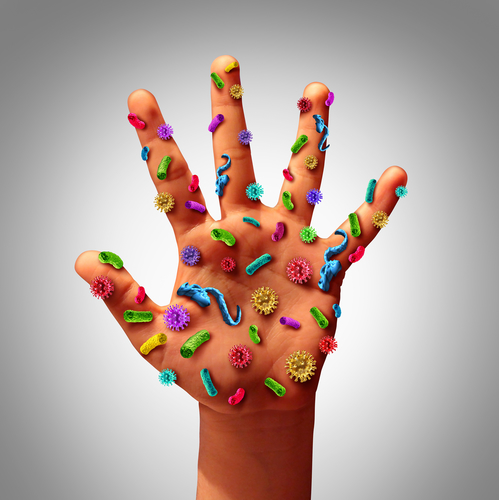We all want our homes to be sparkly clean and want to do what’s best for ourselves, our family, our pets and the environment. Choosing environmentally friendly cleaning products can be a challenging task. Many off-the-shelf household cleaning products claim to be eco-friendly, however there are many hidden chemicals in these. Often many of these are toxic and can do harm to your health and that of your family.
Through a number of studies and research we know that household cleaning products can be linked to health conditions such as asthma, cancer, reproductive issues, lung damage, burns and more. The manufacturers claim that in small amounts toxic chemicals are not likely to pose any health problems, but when you are routinely using these it’s difficult to measure the risk to your health.
You may use an array of products including scents, soaps, detergents, bleaching agents, softeners, glass cleaners, bathroom and drain cleaners just to name a few. Let’s take a closer look at these and what their warning labels state: corrosive, may produce burns, vapour may be harmful, avoid contact with skin, contents can be harmful or fatal. So why do consumers continue to use these products?
Being aware of what’s in your cleaning products may help you understand why they can be so harmful used over a long period of time. Here are four common chemicals that are used in commercial cleaning products and how it may affect your health:
• Phthalates
Often found in fragranced household products such as air fresheners, dishwashing soap, scented soaps and event toilet paper. Phthalates are known to affect the reproductive system of men and women.
• 2-Butoxyethanol
Often found in glass cleaners, laundry stain removers and carpet cleaners. Sometimes also known as 2-BE or butyl cellosolve is known to be associated with blood disorders and may even cause liver and kidney damage.
• Ammonia
Often found in window cleaners, toilet cleaners, bathroom cleaners and all-purpose
cleaners. Vapours from ammonia can irritate the skin, eyes, throat and lungs. Asthmatics are particularly sensitive to the effects of breathing ammonia.
• Sodium Hydroxide
Often found in oven or drain cleaners. This product is extremely corrosive and can cause severe burns. When inhaled it can also affect your throat and respiratory system.
Replacing your cleaning products with a few simple ingredients such as water, baking soda, vinegar, lemon juice and clean sponges can be as effective as the toxic commercial chemical products. You may want to visit our Clean Home Pinterest board for inspiration on natural cleaning tips: https://au.pinterest.com/blisshomecare/clean-home/
Make wise choices and eliminate environmental toxins that are harmful to your health. Reduce your exposure to toxic chemicals by choosing safer, healthier options that also minimise the impact on our environment and keep you healthier, for longer.
In the world of cleaning, it is our responsibility as business owners to educate our employees on how to clean and sanitize the surfaces we care for. Bacteria growth is a big concern for our clients because they want to protect their families from unhealthy environments.
Understanding bacteria and how it grows and moves is one of the starting points in learning how to keep the environments we care for, clean.

Hand germs disease spread and the dangers of spreading illness in public as a health care risk concept to not wash your hands as dirty infected fingers and palm with microscopic viruses and bacteria.
Bacteria don't spread on their own. Here are some ways bacteria find their way to other surfaces.
By having an understanding of bacteria and how it spreads, you can make more informed choices on the products you choose to use and what areas may be at higher risk of bacteria growth.
Copyright MyHouseCleaningBiz.com. All Rights Reserved
Until recently and even at present time, most cleaning companies cleaned for appearance which is what their clients were looking for. However, more and more home owners are concerned with the chemicals that are used in their homes and are looking for better alternatives. Green cleaning is not only cost effective, but it is better for a home’s indoor air quality and making it better environment for families.
But with so many products on the market these days, how do you know which ones are truly "Green"? Here are some suggestions on what to look for when choosing green cleaning products:
Once you've decided to make the switch to green cleaning products, use this as your guide for making the right choices.
Green cleaning is much more than using few chemicals labeled as GREEN. Green cleaning is defined as a system of cleaning promotes healthy surroundings for children, families, visitors and pets that we love. It is equally important and detrimental to environment that we live and share.
We are becoming more concerned and aware about the health of the environment. Awareness is also growing about importance of air quality.
Did you know that the air in our home can be more toxic than the air outside....
The air inside your home can be two to five times more polluted than the air outside. If you are not regularly airing your home (allowing fresh air to enter) will have stale, stagnant and filled with chemical pollutants. Poor air quality in your home can lead to health problems such as allergies, respiratory problems, eye irritation and tiredness.
We are also constantly adding to the air pollution in our home with products we use such as hair spray, deodorants, perfumes, cleaning products, pesticides etc. and we are constantly breathing this polluted air in our homes. The air in the home is not moving around and refreshed by winds and renewed by plants. Pollutants and soil is brought in all the time with our shoes. Cleaning is an important part of removing dirt and pollutants from your home and allowing fresh air to flow in pushing stale air out will create healthy breathing for you and your family.
It has been, and still is a traditional practice, in many countries to air out the blankets and rugs on a daily cleaning ritual. This would remove dirt and toxic spores and the sun light would kill and re-freshen bed coverings and rugs. These days houses are sealed, covered to avoid nastier from coming in but what we are doing is trapping pollution from the outside and concentrating the fumes from hundreds of products we use inside in our homes (air fresheners, deodorants, insecticides, cleaning products) which can lead to toxic indoor atmospheres.
How a home is cleaned can be a major factor in the quality of indoor air. It is important to eliminate individual sources of pollution or reduce their emissions. A simple practice is to OPEN THE WINDOWS on a regular basis to let fresh air in and help move the stale stagnated air to move around. Good practice to air your home on a regular basis, especial your bedroom after you have woken up let some fresh air in. When cleaning your home open the doors and windows.
Another is to use non-toxic and eco-friendly cleaning products in your home.